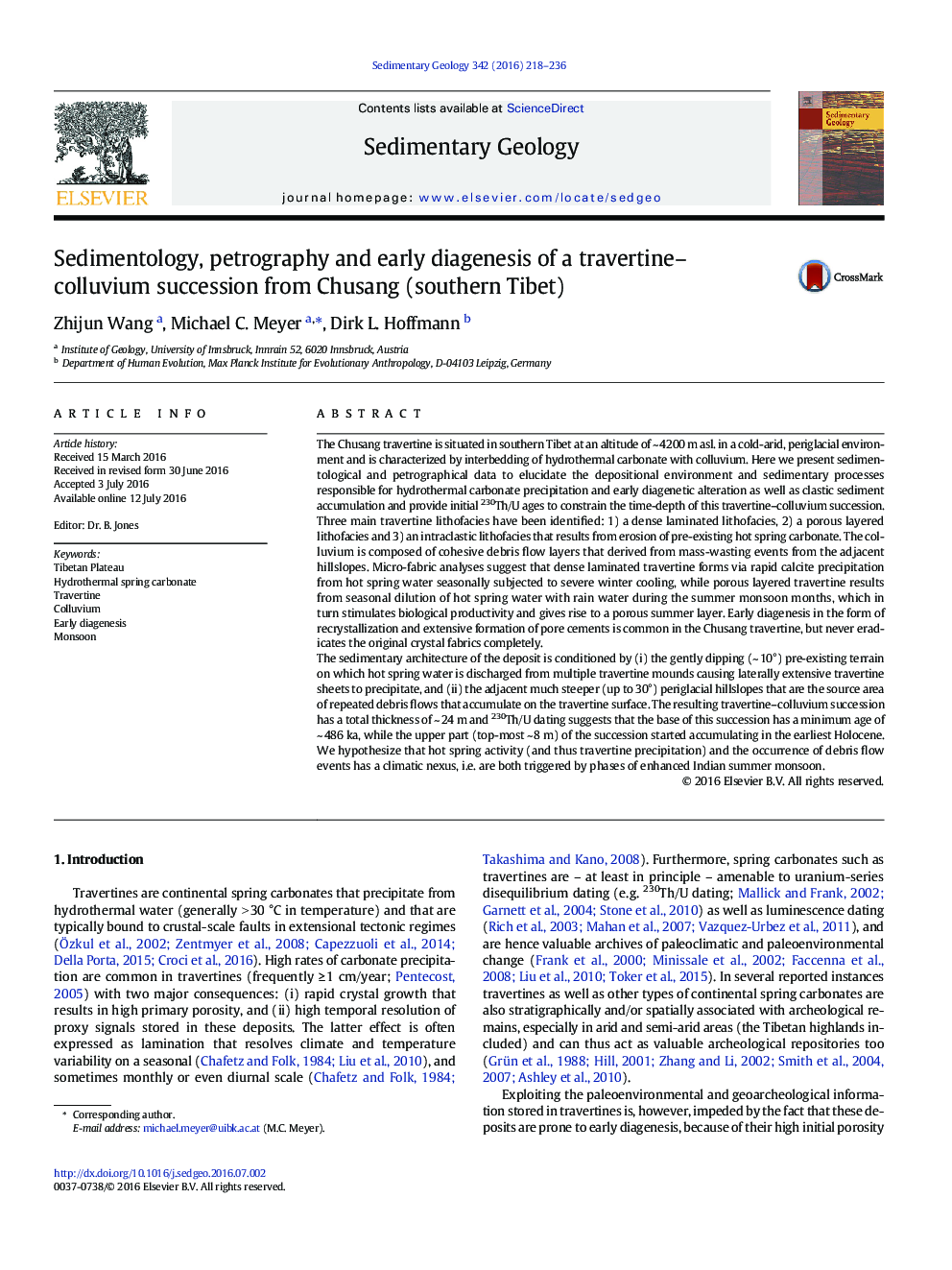| کد مقاله | کد نشریه | سال انتشار | مقاله انگلیسی | نسخه تمام متن |
|---|---|---|---|---|
| 4688992 | 1636021 | 2016 | 19 صفحه PDF | دانلود رایگان |
• A ~ 24 m thick travertine succession interbedded with debris-flow layers occurs in southern Tibet.
• Depositional model links travertine and concomitant debris flow accumulation.
• Petrographic analyses suggest seasonal control mechanism on various travertine lithofacies.
• 230Th/U ages constrain the lower part of the succession to the Middle Pleistocene, top-most ~ 8 m started accumulating in the earliest Holocene
The Chusang travertine is situated in southern Tibet at an altitude of ~ 4200 m asl. in a cold-arid, periglacial environment and is characterized by interbedding of hydrothermal carbonate with colluvium. Here we present sedimentological and petrographical data to elucidate the depositional environment and sedimentary processes responsible for hydrothermal carbonate precipitation and early diagenetic alteration as well as clastic sediment accumulation and provide initial 230Th/U ages to constrain the time-depth of this travertine–colluvium succession.Three main travertine lithofacies have been identified: 1) a dense laminated lithofacies, 2) a porous layered lithofacies and 3) an intraclastic lithofacies that results from erosion of pre-existing hot spring carbonate. The colluvium is composed of cohesive debris flow layers that derived from mass-wasting events from the adjacent hillslopes. Micro-fabric analyses suggest that dense laminated travertine forms via rapid calcite precipitation from hot spring water seasonally subjected to severe winter cooling, while porous layered travertine results from seasonal dilution of hot spring water with rain water during the summer monsoon months, which in turn stimulates biological productivity and gives rise to a porous summer layer. Early diagenesis in the form of recrystallization and extensive formation of pore cements is common in the Chusang travertine, but never eradicates the original crystal fabrics completely.The sedimentary architecture of the deposit is conditioned by (i) the gently dipping (~ 10°) pre-existing terrain on which hot spring water is discharged from multiple travertine mounds causing laterally extensive travertine sheets to precipitate, and (ii) the adjacent much steeper (up to 30°) periglacial hillslopes that are the source area of repeated debris flows that accumulate on the travertine surface. The resulting travertine–colluvium succession has a total thickness of ~ 24 m and 230Th/U dating suggests that the base of this succession has a minimum age of ~ 486 ka, while the upper part (top-most ~ 8 m) of the succession started accumulating in the earliest Holocene. We hypothesize that hot spring activity (and thus travertine precipitation) and the occurrence of debris flow events has a climatic nexus, i.e. are both triggered by phases of enhanced Indian summer monsoon.
Journal: Sedimentary Geology - Volume 342, 1 August 2016, Pages 218–236
